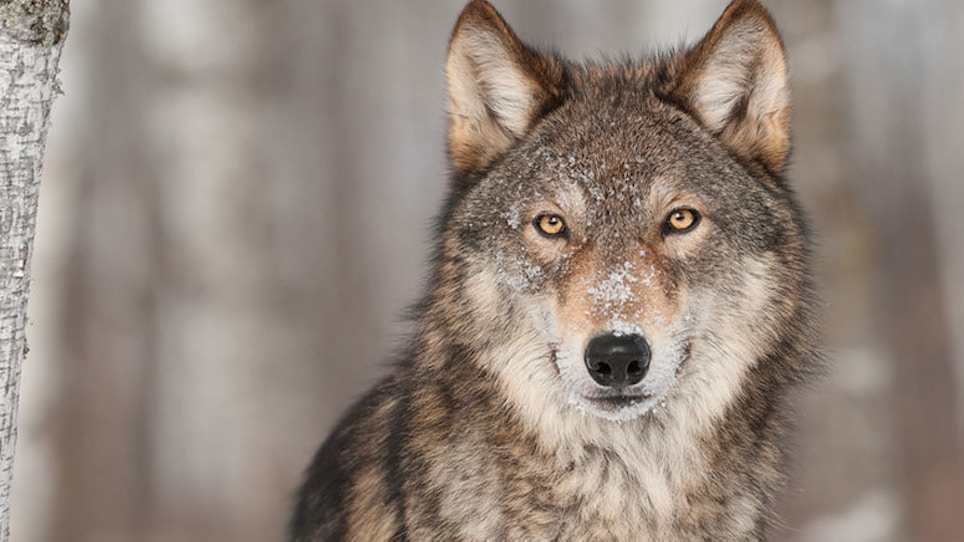I doubt if there’s a predator hunter roaming the country that hasn’t dreamed of matching wits with the master predator of them all — a wolf.
The whole wolf reintroduction program that started in 1995 has been a fiasco from the beginning.
Finally, after years of ignoring facts and figures, the U.S Fish & Wildlife Service (USFWS) reluctantly delisted the wolves and let some states manage their own wolf populations albeit within stringent guidelines.
The two major wolf recovery areas were the northern Rocky Mountain region of Montana, Idaho and Wyoming and the western Great Lakes region of Minnesota, Wisconsin and Michigan. Idaho and Montana were first to open wolf hunting, followed by Wyoming.
The best state today for wolf hunting is Idaho, with a limit of FIVE wolf tags allowed per hunter and reasonable non-resident license fees of $35.50 for a non-game license and $31.75 for each wolf tag. The USFWS originally set the minimum number of wolves that had to be maintained statewide in Idaho at 150. Idaho’s wolf population estimate as of Jan. 2014 was more than 1,000 wolves. This past winter the Idaho Game and Fish Department (IGF), again, aerial gunned more than 20 wolves in the Lolo area because of their continuing detrimental impact on the big-game animals of the area — mainly elk due to the lack of feasible access for wolf-oriented hunters and trappers into the rugged wilderness area.
The Idaho wolf number has declined a bit since the peak 2014 population estimate due to hunting and trapping, but Idaho still has a robust population of the big canine predators and definitely would be my first choice for a wolf hunt, either guided or a do-it-yourself hunt.
Montana’s first wolf hunting was in 2009 and then a court challenge by the wolf lovers stopped the 2010 season. However, game management won in the end and the wolf hunt resumed in 2011. During the 2012 and 2013 seasons there was a total of 225 wolves taken by licensed hunters and a total of 210 harvested during the 2015 season.
Montana’s wolf population is estimated to be around 600 wolves, again far exceeding the minimum. Most of the wolves were harvested by Montana residents while hunting other big-game critters.
Wyoming wolf hunting has been on again, off again, as their management criteria, where wolves were considered trophy animals in limited areas of the northwestern part of the state and predators in the rest of the state with no limit and no license needed, didn’t fly with the judge. She ruled that Wyoming’s estimated 382 wolves needed to be federally protected until the state created a management plan. This inane action came after 14 years when Wyoming’s wolf population far exceeded the minimum de-listing criteria of 100 wolves outside of the national parks. Duh! During Wyoming’s 2012 hunting season there were only 42 wolves taken by trophy hunters and 25 in rest of state. In 2013, trophy hunters killed 24 and predator hunters took 39, which wasn’t much impact on the total population when the number of wolves in the national parks is not figured into the total population estimate.
The western Great Lakes region states of Minnesota, and Wisconsin got to legally hunt wolves for three years before the anti’s got wolves in these states put back under federal protection.
During Minnesota’s first wolf season in 2012, licensed hunters and trappers killed a total of 413 wolves while depredation kills and other mortalities added 306 more for a total of 719. In 2013, the total statewide wolf harvest amounted to 401, and in 2014 the total kill increased to 515. Then the animaniacs got their day in court and once again the wolves in these states were listed as endangered.
The status of wolves in Michigan changed five times from 2008 through 2014 with the only legal hunting season in 2012 and 2013 due mostly to political ineptitude and procrastination. Michigan estimated its wolf population at 658 and set a quota of 43, with 22 wolves killed.
Wisconsin held wolf hunts in 2013, 2014 and 2015. Traps, snares, dogs, bait and electronic calls were legal. During the 2012-13 seasons, 117 wolves were taken. Wolf hunter/trappers killed 257 wolves during the 2013-14 seasons, and 154 wolves during the 2014-15 season. Trappers harvested roughly 80 percent of the wolves taken.
Wolves are without doubt the most controversial critter roaming North America and the fight for fact-based, common-sense wolf management to include hunting is unfortunately far from over.






